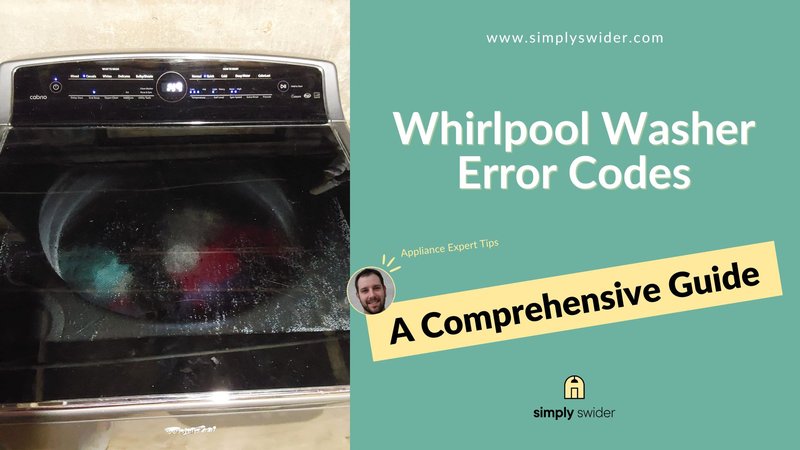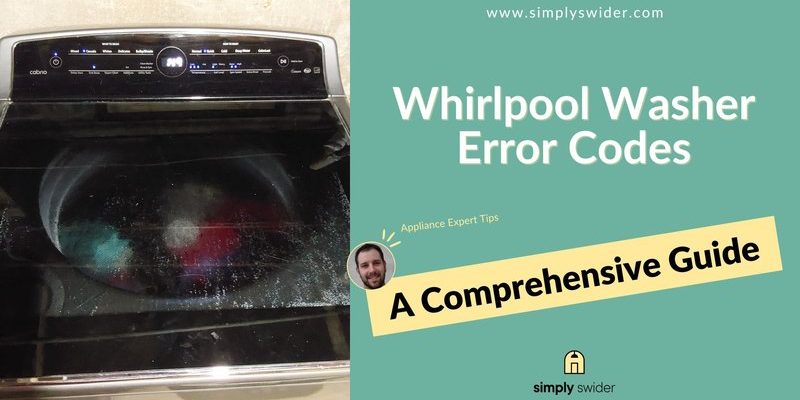
When your Whirlpool washing machine displays the “UE” error code, it’s basically trying to tell you, “Hey, I can’t spin correctly!” It’s a common notification about an unbalanced load, and it’s mostly seen as an act of the machine protecting itself from damage. Imagine your machine like a dancer who suddenly loses their rhythm – it doesn’t stop, but it’s a bit off balance, and it’s trying to find its groove again. The good news is, this isn’t a terribly complicated issue, and there are straightforward ways to resolve it.
Understanding What an Unbalanced Load Is
When your washing machine gives you the “UE” code, it’s usually crying out because it feels wobbly. But why does this happen? Well, an unbalanced load is just what it sounds like – your laundry pile isn’t distributed evenly in the drum. Think of it as trying to carry a bag of groceries with all the weight on one side; naturally, it’s going to tip and sway.
Each time you load the washer, it spins to wash and rinse the clothes. During the spin cycles, if the clothes clump on one side, the drum becomes unbalanced. The machine’s sensors pick up on this imbalance and stop the spin cycle to prevent damage, causing the “UE” code to flash. In some cases, heavy items like towels or bed sheets can wrap around lighter items, creating this imbalance. So, to keep your washing machine happy, it’s crucial to load your laundry evenly.
Besides heavy items grouping together, the issue can also arise from a failure to distribute similar clothing types or sizes evenly. If you put in a mix of large and small clothing items without spreading them out, you might end up with this error. The solution? Make sure to distribute clothes evenly around the drum before you start the cycle. If you’re dealing with large items, consider adding smaller ones to balance things out.
Why the Machine Stops Spinning
So, you’ve got an unbalanced load. You might be wondering why the washing machine just doesn’t power through. Well, here’s the deal: modern washing machines are smarter than you might think. The “UE” error is a feature, not a flaw. It’s designed to prevent excessive shaking and potential damage to the drum and internal components.
Imagine, if you will, a car speeding down a bumpy road. If it continues without caution, it might damage its tires or suspension. Similarly, your washer stops spinning to avoid further issues. This self-preservation tactic is a hallmark of modern machines and keeps your laundry room from turning into a mini earthquake zone.
Once the machine senses an imbalance, it tries to correct it by redistributing the load automatically. Often, it will fill with water again to help with redistribution. If it can’t fix the issue, it stops to notify you with the “UE” code. As inconvenient as it may seem, this is your machine’s way of saying, “Help me help you.”
Easy Solutions: How to Fix the “UE” Error
If you find yourself face-to-face with the “UE” code, fear not – you’ve got this. The first step is simple: open the washer and take a look inside. Gently unfurl any twisted towels or sheets and rearrange the clothes evenly around the drum. This small adjustment often resolves the error.
If you notice that the clothes are not distributed evenly, try adding a few more items to balance the load. For instance, if there are just a couple of heavy towels, toss in a few t-shirts or smaller items to even things out. Once you’ve balanced the load, restart the washing cycle. In most cases, this should solve the problem.
Another tip is to check if the washing machine itself is level on the ground. If it’s tilting forward or backward, use the adjustable feet to correct its position. This ensures the machine can spin smoothly without any additional imbalance caused by an uneven floor.
Preventing Future “UE” Errors
Preventing the “UE” error from happening again is quite straightforward. First and foremost, pay attention to how you load your machine. Make sure clothes are spread out evenly and refrain from washing large, heavy items together without balancing them with smaller items.
Regularly check that your machine is level. Each time you relocate it, even slightly, its balance may be affected. Keep an eye on the placement and adjust the feet if necessary to maintain stability.
Lastly, consider the size of the load. Overloading your washing machine is a surefire way to trigger imbalance issues. Respect the capacity of your machine and if you’re unsure, refer to the user manual for guidance.
By following these steps, you can ensure your washing machine runs smoothly and avoid those pesky “UE” codes. Just remember, a balanced load is a happy load!
